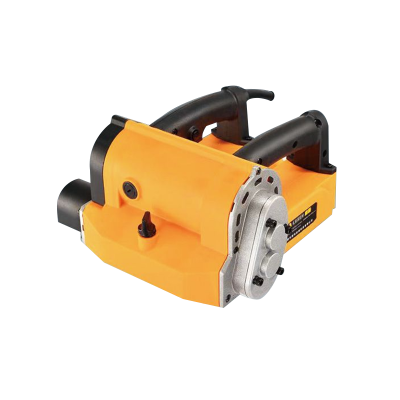
Wall planing machines are versatile tools widely used in construction, renovation, and remodeling projects. These machines are designed to remove surface layers, smooth walls, and prepare surfaces for finishing. However, understanding the range of materials that wall planing machines can handle is essential for selecting the right tool for a specific task.
Wood Surfaces
One of the most common materials wall planing machines handle is wood. Whether it's timber paneling, wooden boards, or wooden frames, wall planing machines can efficiently smooth rough surfaces, remove paint, or trim uneven edges. The cutting blades of these machines are specifically designed to maintain precision while minimizing splintering, making them suitable for both softwood and hardwood surfaces.
When working with wood, it's important to adjust the machine's speed and blade height according to the material's density. Softer woods may require less pressure, while harder woods may need slower passes to achieve an even finish. Regular maintenance, such as cleaning the blades and checking for sharpness, also ensures consistent performance when planing wooden surfaces.
Plaster and Drywall
Wall planing machines are equally effective on plaster and drywall. These materials often require smoothing before painting or wallpapering, and the machines can remove minor imperfections, uneven patches, or old adhesive residues. Using a wall planing machine on plaster or drywall requires careful handling to avoid gouging the surface. Multiple light passes are generally preferable to one aggressive pass, as this approach reduces the risk of damage while achieving a smooth finish.
Drywall sanding and planing can produce a significant amount of dust. Many wall planing machines include dust collection systems or attachments that help maintain a cleaner working environment. Proper safety equipment, including masks and goggles, is recommended when handling these materials.
Concrete and Masonry
Although wood and drywall are common, wall planing machines can also handle harder surfaces such as concrete and masonry. These machines are often equipped with specialized diamond or carbide blades that can grind down uneven patches, remove old paint, or prepare walls for new coatings. Concrete and masonry require slower operation and steady control to prevent excessive wear on the blades and avoid surface damage.
When planing concrete, it's advisable to work in sections and monitor blade wear. Unlike softer materials, these surfaces demand more durable components and frequent inspections to maintain effectiveness. Water-fed planing systems can also help reduce dust and keep the machine running smoothly.
Plastic and Composite Panels
Some wall planing machines are capable of handling plastic or composite panels. These materials are commonly used in interior construction and furniture applications. The machines can remove surface layers, trim edges, or smooth panels for finishing. Users should adjust speed and blade pressure to prevent melting or chipping, as plastics can be sensitive to heat generated by rapid cutting.
Wall planing machines are versatile tools suitable for a wide range of materials, including wood, plaster, drywall, concrete, masonry, and certain plastic or composite panels. Understanding the material being worked on, adjusting machine settings, and maintaining the equipment properly are crucial for achieving smooth, even surfaces. By selecting the right machine and following careful operating procedures, users can handle different materials efficiently, ensuring surfaces are well-prepared for finishing or further construction work.
Wall planing machines offer flexibility for both professional builders and DIY enthusiasts, making them a valuable addition to any workshop or construction site.
